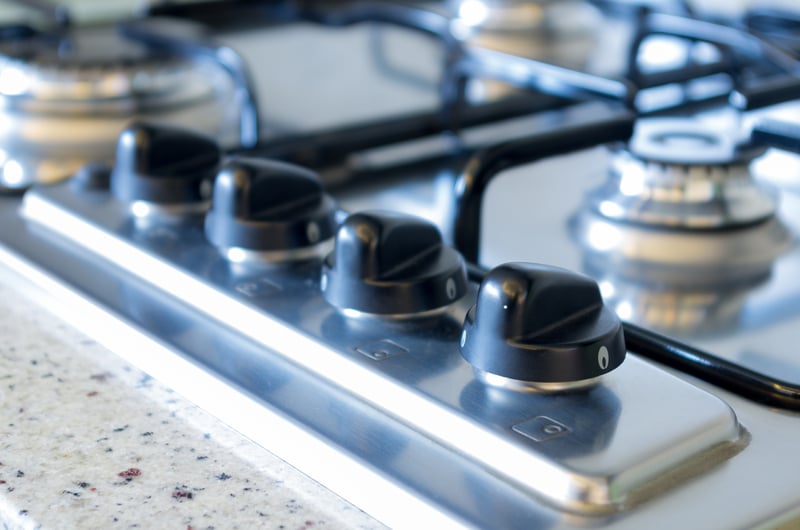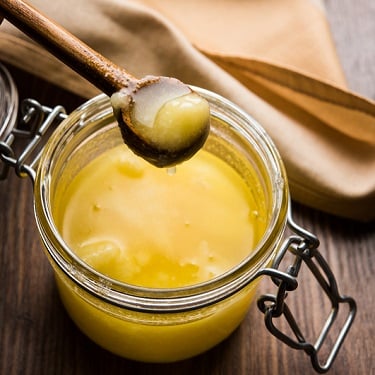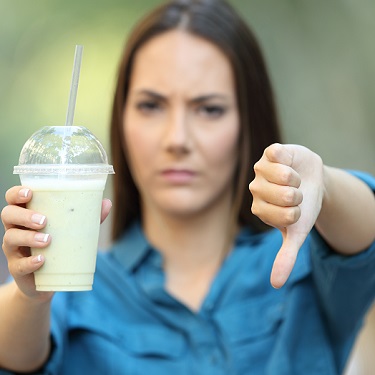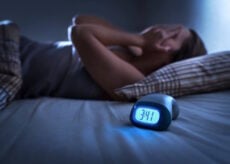10+ Germiest Places in Your Home (#3 Is Shocking)

If you were a betting person, what would you put your money on for being the germiest place in your home? Most of us would put a few bucks down on the toilet. Yet according to scientists at NSF, which develops public health standards and certification programs, the toilet seat isn’t even in the top 10.
Surprised? You’re not alone!
After swabbing 30 different surfaces in 22 homes, they examined which surfaces contain the highest levels of yeast, mold, coliform bacteria (such as salmonella and E. coli), and even staph germs. Be prepared to be grossed out, as many surfaces you may believe are “clean” are probably far from it.
Germs: They’re Everywhere!
It’s true that we come into contact with trillions of microbes every day. In fact, they live on and in us. And most of them aren’t an issue. Others are even good for us, and exposure to them helps build our immune systems. But there are also dangerous or even deadly bacteria, molds, and fungi that can grow quickly, including:
- Viruses (e.g., those responsible for flu)
- Bacteria (e.g., those that can lead to colds)
- Salmonella
- Listeria
- Campylobacter
- Yeast
- Black mold
- Staph
- E. coli
- And fecal matter
Those are the ones we want to clear out of our living spaces before they can take root and multiply.
Many of us already know that toilets are, well, dirty. That’s why they’re generally cleaned so regularly, and also why they’re less likely to be the worst offenders when it comes to germs in the home. In short, we make an effort to keep them clean. In fact, researchers have found more fecal bacteria in the kitchen sink than in a flushed toilet. (Spoiler alert: Your pet may be heading to the bathroom for a quick drink out of that bowl because it’s cleaner than their own bowl. 😲)
So, where are the germiest places in your home?
The 10 Germiest Places in Your Home
#10: Cutting Boards
Cutting Boards can harbor dangerous bacteria like salmonella or E. coli as well as molds and yeasts. Protect yourself and your family by cleaning your cutting boards after every use by either running them through the dishwasher or washing them in the sink with hot, soapy water.
#9: Stove Knobs
Let’s face it, when you’re cooking food and the temperature needs to be adjusted, you don’t always think about washing your paws first—even if you’ve been handling other food. Plus, food often splatters while cooking. Unfortunately, that means the knobs can build up gunk and germs. If you cook at home, do yourself a favor and remove the knobs to wash them thoroughly in hot, soapy water around once a week.
#8: Kitchen Counter
Think your counters are clean enough to eat off of? Think again. Counters are contaminated with all sorts of bacteria, molds, and other germs and grime. After wiping off crumbs and dirt, take an extra moment to clean more deeply before using the counters to prepare food.
If you don’t want to use a diluted bleach and water solution or another harsh cleaning product, one good option is to use distilled white vinegar in tandem with hydrogen peroxide to clean and disinfect your counters or other hard surfaces. First, clean the surface with hot soap and water. Then dry it off with a clean cloth. Then spray the counter with vinegar and allow it to sit for five minutes. Wipe off the counter and then spray with hydrogen peroxide. Again, let it sit for five minutes before wiping it off with a clean, dry cloth. (However, if you have granite, marble, or natural rock countertops, don’t use vinegar as the acid can etch the stone, leading to damage.)
#7: Pet Toys
While you probably love to play fetch or tug with your pets as much as I do, it’s worth noting that their toys are loaded with potentially dangerous bacteria (such as staph). They were also found to harbor yeast and molds.
It should go without saying that after playing with your pet, it’s important to wash your hands well. You can also wash hard pet toys with soap and water or another pet-safe detergent. And their soft toys? Toss them into the washer on the regular.
#6: Faucets
When you turn on the faucet, your hands are typically far from clean. That leaves residue and bacteria behind. No wonder faucets are so high on the list. When cleaning sinks, don’t skip wiping down the faucets daily (or more often if someone’s been ill) to help prevent the spread of these germs through the rest of the house.
#5: Coffee Makers
When was the last time you completely cleaned your coffee maker? Odds are, it’s time. Coffee makers are dark and damp, which makes them fantastic for breeding microorganisms, including coliform bacteria, mold, and yeast.
While it’s important to follow the instructions from the manufacturer, the usual instructions recommend adding 4 cups of white distilled vinegar to the reservoir. Allow the vinegar to soak in the reservoir for around 30 minutes. Then run the coffee maker through a brew so the vinegar flows through the machine. Once the vinegar is in the coffee pot (i.e., it’s finished “brewing”), follow up with three or four cycles of fresh water to flush away any residual smell.
How often should you practice this cleaning ritual? Experts recommend at least monthly.
#4: Pet Bowls
It’s not just their toys that can harbor bacteria, mold, and yeast: pet bowls are hotbeds of growth. Think of the slimy surface of a dog’s bowl. That’s created by biofilm; this is, a coating of germs. Some of the germs that can be found on pet bowls include E. coli, listeria, salmonella, and legionella, which can make your pet (and you) sick.
Worse, the ubiquitous plastic pet bowls often have small nicks where bacteria can take hold and thrive. Stainless steel or ceramic are better options. And if the ceramic cracks, it’s time to retire the bowl and get a new one. (Germs love crevices.)
Help keep you and your beloved animals safe by cleaning these containers regularly. They can easily be tossed into the dishwasher and run through the sanitizing cycle. Or they can be hand-washed with a pet-safe detergent and hot water—preferably in a utility or bathroom sink rather than the kitchen sink.
How often should pet bowls be washed? Preferably daily. (You wouldn’t want to use the same dirty dish for days on end, would you?)
BREAKING: Forget Taking Collagen, Try This 21-Second Trick for Healthier Skin & Hair Instead
#3: Toothbrush Holders
One of the most overlooked places for higher levels of bacteria is toothbrushes and their holders. Not only are these kept in a humid environment, but they’re also typically stored in the bathroom, which is close to the toilet. Make no mistake, every time you flush, fecal particles are released into the air to land on anything in the surrounding area. How far do those particles actually travel? At least six feet! (Ick!)
While we often rinse a toothbrush well both before and after use, the same isn’t always true of the holder. Fortunately, you can remedy this by placing the holder in the dishwasher (if it’s dishwasher safe) or washing it in hot, soapy water at least two times per week.
#2: Sinks
Not only are faucets germy, but the entire sink collects contaminants, including bacteria and molds. While it’s a good idea not to leave dirty dishes soaking for days on end, you don’t have to clean your sink every night before you go to bed. Do, however, make it clean and shiny at least twice a week. And then at least monthly, hit it with a good disinfectant and rinse it well. If you use one, don’t forget the sink strainer. That needs a good bath too!
If you defrost raw meat or rinse raw chicken or handle meat or fish of any kind in your sink, then go ahead and clean it well the same day.
#1: Dish Rags or Sponges
This one probably doesn’t come as a surprise. With the wet environment, regular contamination with food particles, and more, dish rags and sponges can grow an alarming amount of bacteria, yeast, mold, and even staph. Yuck! No wonder up to 20% of all foodborne illnesses have been found to start with food prepared at home.
To ensure you keep the entire kitchen cleaner, clean the rags and sponges daily. After use, toss your rags into the washing machine and wash on hot. After rinsing out your sponges, help remove any remaining germs by putting them (while wet) into the microwave for at least two minutes every day, if not after every use.
Of course, there are other germy areas in the house that need regular cleaning, such as:
• Bath towels, hand towels, and bar soaps (which also are exposed to fecal particles with every flush)—wash these towels at least every three or four days in hot water. Then make sure the towels are completely dry before you put them away.
• Makeup brushes are considered essential devices for many women’s beauty routines. They also, however, come into contact with bacteria, oils, and dead cells on the skin—often daily. And of course, they may live on the bathroom counter right next to a toothbrush holder. Remember to wash them with mild soap and hot water, especially if you notice makeup build-up, but at least every two weeks.
• Refrigerator handles are ripe with germs as many people just wipe their hands before grabbing the next food from the fridge, even if they’ve been handling raw meat or poultry.
• Kitchen towels tend to be rehung and reused even after being contaminated. At the very least, these should be washed every other day.
• Meat and vegetable compartments in the fridge as well as can openers and blender gaskets are also highly likely to be contaminated with germs, including salmonella and E. coli. Don’t neglect rubber spatulas or pizza cutters. Up to 35% tested were found to be contaminated with E. coli.
• Remotes and controllers may not hold moisture, but they do get handled by many different sets of hands daily. Worse, they’re rarely cleaned. Yet research has found that both TV remotes and video controllers are likely to have measurable amounts of yeasts, molds, and other germs. Don’t forget to give them a good wipe down with a disinfectant and a rag or wipe that’s safe for electronics.
• Keyboards for laptops, desktops, and even tablets are another seriously germy place. They’re high-touch areas that just get neglected on the usual cleaning lists. Some have an even higher percentage of mold and yeast than a kitchen sink or bathroom doorknob. Luckily, they do tend to be lower in bacteria and viruses that get people sick. That doesn’t mean, though, that they aren’t ready for a good cleaning.
• Speaking of door handles, these are another frequent germy offender. Yes, they tend to be dry, so we may not think about them being breeding grounds. But they are touched by everyone who goes in and out of the room. While you can disinfect door handles with cleaning wipes or sprays, interestingly, another way of helping prevent the build-up of germs is by choosing better door knobs. It turns out that handles made with copper or copper alloys (like bronze and brass) are naturally antimicrobial and kill germs that land on them, often within a mere two hours. Even then, it’s still a good idea to give them a good cleaning regularly, especially if anyone’s been sick. And while you’re at it, go ahead and clean off the light switches as well.
• Toilet bowls may not be the germiest area in the house, but that doesn’t make them clean. And every time you flush after doing your business, tiny particles of feces are blasted into the air and can travel several feet. (Remember the toothbrush holder?) In addition to regular cleaning, you can help keep the whole bathroom cleaner just by putting the lid down before you flush.
• Purses or bags help keep all of our necessities close at hand when we’re at work, running errands, etc. Unfortunately, purses are often set down in numerous places throughout the day—including public floors (even in bathrooms). Take time to periodically clean both the inside and the outside of your purse, including what lives in the purse (keys, sun or reading glasses, Chapstick, etc.) to wipe away the dirt, grime, and disease-causing germs. Since you’re cleaning your bag anyway, when was the last time to wiped down your gym bag? If you’re taking it into a public locker room, it needs a regular cleaning both inside and out.
No matter what area of your home you are cleaning, don’t just give it a quick spritz, wipe, and then move on. Use the recommended amount of a cleaner and then give it a minute to sit before you wipe it off and finish cleaning. That way, the detergent can do its job fully and help ensure your kitchen, bathroom, etc. really are as clean as they look.





 US Doctor: "Eating This Every Day Can Snap You Into Ketosis"
US Doctor: "Eating This Every Day Can Snap You Into Ketosis" 3 Key Nutrients to Help Lubricate Your "Tin Man" Joints
3 Key Nutrients to Help Lubricate Your "Tin Man" Joints AVOID Plant-Based Protein Powders (unless...)
AVOID Plant-Based Protein Powders (unless...)

